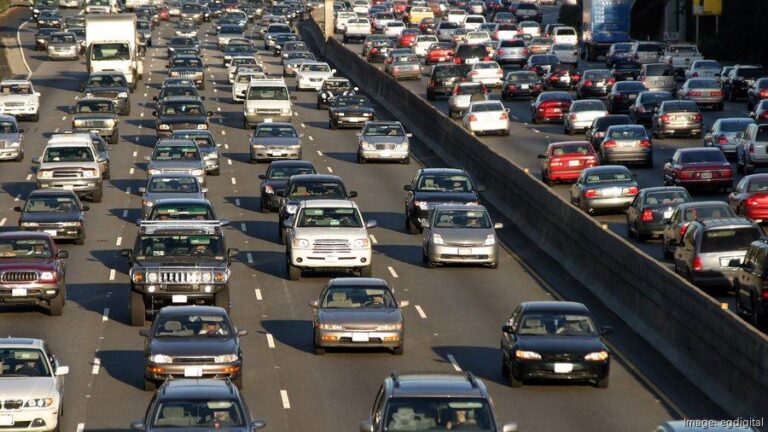HoustonŌĆÖs Traffic Crisis Deepens: Causes, Consequences, and Solutions
Surging Population Fuels HoustonŌĆÖs Unprecedented Traffic Congestion
HoustonŌĆÖs transportation network is buckling under the pressure of rapid population growth, pushing the cityŌĆÖs road infrastructure to its limits. Journeys that once took half an hour now frequently stretch beyond an hour, with traffic jams extending far beyond the traditional rush hour windows. Experts attribute this worsening gridlock to sprawling suburban development combined with a lack of robust public transit alternatives. Key arteries like I-45 and Beltway 8 have become infamous for their near-constant standstills, frustrating commuters and diminishing daily productivity.
The repercussions extend beyond mere inconvenience, impacting both the economy and the environment. The following table highlights the stark changes in HoustonŌĆÖs traffic landscape over the past five years:
| Indicator | 2019 | 2024 |
|---|---|---|
| Average Commute Duration (minutes) | 30 | 52 |
| Daily Traffic Accidents | 280 | 410 |
| Estimated Daily Economic Loss (millions) | 75 | 130 |
Urban planners emphasize the urgent need to:
- Broaden and enhance public transportation networks
- Deploy intelligent traffic control technologies
- Promote carpooling and alternative commuting methods
Failing to implement these measures risks further deterioration of HoustonŌĆÖs traffic conditions, threatening residentsŌĆÖ quality of life and the cityŌĆÖs economic health.
Economic Strain and Environmental Damage from HoustonŌĆÖs Traffic Woes
The escalating commute times in Houston are inflicting significant economic setbacks across industries. The average commuter now endures over 100 additional hours annually stuck in traffic, equating to billions of dollars lost in wages and productivity. Businesses face delays in deliveries, disrupted workflows, and rising operational expenses, undermining HoustonŌĆÖs position in the competitive national market.
Environmental consequences are equally alarming. Prolonged idling and stop-and-go traffic contribute to elevated emissions, worsening air quality and public health outcomes. HoustonŌĆÖs smog levels have surged, intensifying respiratory ailments and increasing healthcare burdens. Key environmental concerns include:
- Elevated carbon dioxide (CO2) emissions from extended engine idling
- Increased nitrogen oxides (NOx) that accelerate ozone formation
- Higher fuel consumption due to inefficient traffic flow
| Economic Impact | Environmental Impact |
|---|---|
| Approximately $7.5 billion lost annually in productivity | 5.6 million metric tons of CO2 emitted each year |
| Average daily delay of 45 minutes per commuter | Ozone levels surpassing EPA limits over 30 days annually |
| Rising freight and logistics expenses | Increased prevalence of asthma and other respiratory conditions |
Cutting-Edge Infrastructure Initiatives Target HoustonŌĆÖs Traffic Challenges
In response to the mounting congestion, HoustonŌĆÖs city officials have launched a suite of innovative infrastructure projects aimed at streamlining traffic and shortening commute times. These efforts include expanding express lanes on critical highways, implementing AI-powered traffic signal systems, and developing new transit hubs that integrate multiple transportation modes. The goal is to not only alleviate gridlock but also foster sustainable urban mobility by encouraging alternatives like bus rapid transit and bike-sharing programs.
Highlights of these forward-thinking projects include:
- Widening the I-45 corridor with variable toll express lanes
- Deploying smart traffic lights that adapt in real time to traffic conditions
- Building park-and-ride facilities connected to light rail expansions
- Integrating live traffic data into commuter apps for up-to-the-minute updates
| Project | Projected Completion | Anticipated Benefit |
|---|---|---|
| I-45 Express Lanes Expansion | 2025 | Cut peak congestion by 30% |
| Smart Traffic Signal Network | 2024 | Boost intersection efficiency by 25% |
| Transit Hub Development | 2026 | Raise public transit ridership by 15% |
Effective Strategies for Managing HoustonŌĆÖs Peak Hour Traffic
When HoustonŌĆÖs streets become heavily congested, adopting proactive strategies can significantly ease the commute. Utilizing navigation apps such as Waze or Google Maps to monitor real-time traffic conditions allows drivers to avoid known choke points. Adjusting departure times by even 15 to 30 minutes can lead to smoother travel experiences. For those with flexible work arrangements, remote work or staggered hours can help circumvent the worst traffic periods altogether.
Being mindful of lane usage and staying alert to sudden traffic changes is also essential. Balancing routes between major highways and secondary roads can help avoid severe backups, though caution is advised around merging zones and accident sites. Below is a summary of typical congestion patterns by time and location in Houston:
| Time Frame | Average Delay | Common Bottlenecks |
|---|---|---|
| 6:30 AM ŌĆō 8:30 AM | 15ŌĆō30 minutes | I-10 Eastbound, 610 Loop South |
| 4:00 PM ŌĆō 6:30 PM | 30ŌĆō45 minutes | US-59 Northbound, I-45 Northbound |
| Saturday Evenings | 10ŌĆō20 minutes | Galleria District, Westheimer Road |
Conclusion: Navigating HoustonŌĆÖs Traffic Future
As HoustonŌĆÖs traffic congestion intensifies, the city faces mounting challenges that affect commuters, businesses, and the environment alike. With infrastructure development lagging behind population growth, innovative solutions and comprehensive planning are imperative. For residents and decision-makers, grasping the multifaceted nature of HoustonŌĆÖs traffic crisis is crucial to forging a path forward. Bold investments and policy reforms will be essential to reduce gridlock, enhance mobility, and improve the overall quality of life for all Houstonians.



